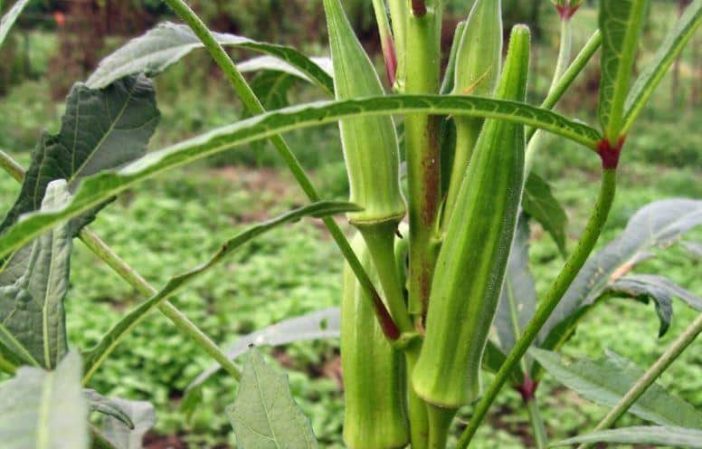Understanding them
Okra, okro, ladies’ finger or ochro refers to a flowering plant that belongs to the mallow family. Its origin is thought to be Ethiopia, south Asian or west Africa, a debatable issue. Grown in the subtropical and tropical regions, this plant is valued for its green pods that are edible.
The edible pods can be cooked (they turn slimy), eaten raw, pickled, or can be a part of salads.
If you are a fun of this pods, they have carbohydrates, vitamins A, B1, B2, B3, B9, C, E, K as well as minerals including iron, calcium, magnesium, potassium, phosphorus, and zinc.
Can they have okra?
If you were uncertain whether these rabbits should have okra or not, we want to assure you that it is safe [1] and can be a part of the non-leafy vegetables these animals can eat.

Similarly, the okra leaves and stem (tops) are also safe[2] and they can form a part of the leafy veggies that your furry friend can have.
If you want to share the okra pods with your bunnies, it is considered as non-leafy greens or vegetables. This means that it should be given only as a treat occasionally.
Let the amounts be about a teaspoon if your bunny weighs two pounds. Once they have this treat, they cannot have any other snack for that day.
If you intend to feed your bunnies with the okra leaves and stem (tops), they can make a part of leafy greens that these animals eat, i.e., the tops should be a part of a mixture of 5-6 leafy greens. A chopped cup of this mixture is enough for a rabbit whose weight is two pounds per day.
You are encouraged to keep changing the various non-leafy vegetables and leafy greens you give this pet. However, do not include more than one new food.
Always follow the rules for introducing new foods. Begin gradually as you observe if it causes any stomach problems such as gas, diarrhea or bloat.
Secondly, make sure the source is free of any chemicals that may have been used in the farm and always go for fresh raw ones.
Conclusion
Although a source stated that okra is not safe due to the high amount of sugars (1.48g in 100g) and calcium (82mg per 100g). We do not concur with this conclusion. As already mentioned, the pods are given as treats which are usually in small amounts.
Secondly on the issue of it having a high oxalic acid,[1] data from United States Department of Agriculture put it at 0.05g per 100g which is much lower than spinach, kales, collards, parsley, carrot tops, Brussels sprouts, and many others. Therefore, the issue of being high in oxalic acid is flawed.
While serving your pet with leafy greens, ensure you only include one high oxalic acid greens as well as try to ensure the amount of calcium for the combination is not so high. Mix those with high calcium and low calcium.
